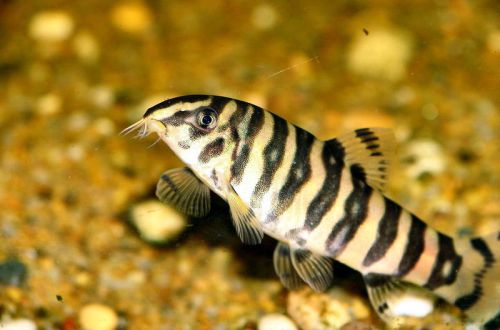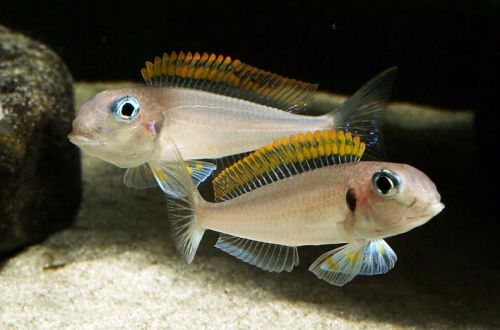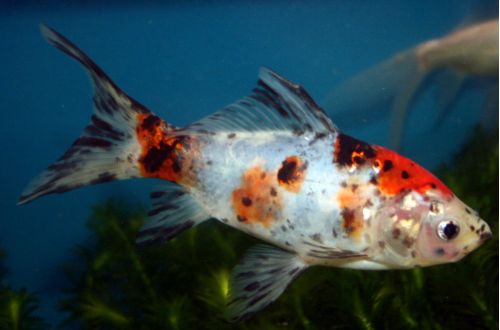
Gangetic Loach
Botsia Rostrata or Gangetic Loach, scientific name Gangetic loach, belongs to the family Cobitidae (Loaches). It has a bright color at a young age, which changes over time and becomes less pronounced. The content is quite simple, the fish is hardy and unpretentious, if the necessary conditions are maintained. Due to not simple behavior, the choice of neighbors in the aquarium is difficult.

Contents
Habitat
The territory of India and Bangladesh also originates from the basin of the Ganges River and its left tributary, the Brahmaputra. Inhabits mainly relatively small tributaries with a slow current and rocky substrates.
Brief information:
- The volume of the aquarium – from 200 liters.
- Temperature – 19-27°C
- Value pH — 6.0–7.5
- Water hardness – soft (2-12 dGH)
- Substrate type – rocky pebble
- Lighting – subdued / moderate
- Brackish water – no
- Water movement – moderate
- The size of the fish is 11–12 cm.
- Food – any, preferably sinking food
- Temperament – inhospitable
- Content in a group of at least 3–4 individuals
Description
Adult fish reach a length of about 11–12 cm. Sexual dimorphism is weakly expressed. Males, unlike females, are noticeably smaller and have an elongated mouth. Color changes over time. In the juvenile stage, the body pattern consists of alternating yellow and black stripes. As they mature, the color becomes brownish with white speckles, the stripes gradually disappear.
Food
An omnivorous species, unlike many relatives, it feeds not only at the bottom, but also swims to the surface. Accepts all types of dry, frozen and live food. Herbal supplements must be provided in the diet, otherwise decorative aquarium plants may suffer.
Maintenance and care, decoration of the aquarium
Recommended aquarium sizes for a group of 4-5 fish start at 200 liters. The most natural setting consists of a rocky or sandy substrate and a few driftwood. The presence of living plants is not necessary, you can use artificial or unpretentious mosses and ferns, which are fixed on the surface of snags. In general, the design is of secondary importance, so there is nothing wrong if the aquarium is equipped to the taste of the aquarist, the main thing is to provide the fish with places to hide.
Optimal keeping conditions are achieved with moderate flow and high water quality. A productive filtration system along with a weekly replacement of part of the water (30-50% of the volume) with fresh water are mandatory.
Behavior and Compatibility
Being in a group of 3-4 individuals is welcome, with a smaller number, manifestations of aggressive behavior towards other fish are possible. In addition, small catfish and species that have long veiled fins should be avoided in a small aquarium, as they may also suffer. A harmonious community with the Gangetic Loach is obtained in fish that live in the water column or near the surface.
Breeding / breeding
At the time of this writing, there were no successful experiences of breeding Botia Rostrata in a home aquarium. Mass breeding is carried out in specialized fish farms using hormones.
Fish diseases
By their nature, non-ornamental fish species that are close to their wild relatives are quite hardy, have high immunity and resistance to various diseases. Health problems can be the result of inappropriate conditions, so before starting treatment, check the quality and parameters of the water. If necessary, bring all values back to normal and only then begin treatment, if necessary. Read more about diseases, their symptoms and methods of treatment in the section “Diseases of aquarium fish”.





